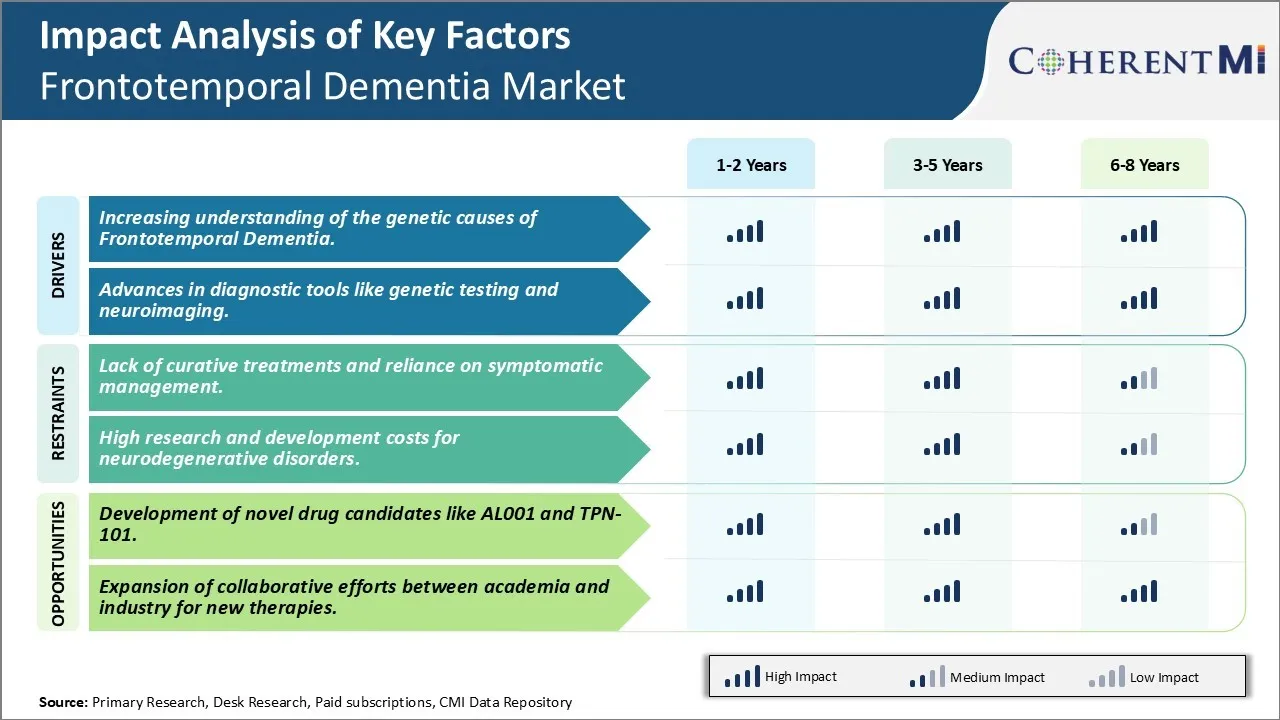Frontotemporal Dementia Market Trends
Market Driver – Increase in Understanding of the Genetic Causes of Frontotemporal Dementia.
Understanding the causes of a disease is crucial to develop effective treatments and find possible prevention strategies. Frontotemporal dementia is a complex disease with multiple genetic and environmental factors involved in its development. While genetics play an important role, identifying the specific genes associated with different types of FTD has been an ongoing challenge for researchers. However, in recent years significant progress has been made towards understanding of how certain genetic mutations can increase the risk or directly cause FTD.
Large multicenter genome-wide association studies have identified several genetic variants strongly linked to both FTD and related conditions like amyotrophic lateral sclerosis. Further research has helped characterize these genetic links in more detail. For example, mutation in the C9orf72 gene has emerged as the most common known genetic cause of both FTD and ALS. Understanding this association has provided important clues about shared disease mechanisms between the two disorders. Similarly, mutations in GRN, MAPT, and other genes have been revealed as high-penetrance genetic risk factors for different clinical variants of FTD. Post-mortem analyses of brain tissues from patients with known genetic mutations have aided researchers in mapping out how specific genes may disrupt cellular functions to cause neurological degeneration.
International consortium efforts have created large databases aggregating genetic, clinical, and neuropathological information from thousands of FTD cases worldwide. This has accelerated discoveries of new genetic risk factors and helped establish genotype-phenotype correlations. For instance, MAPT mutations are known to predominantly cause behavioral variant FTD while GRN mutations often present as semantic dementia.
Market Driver - Advances in Diagnostic Tools Like Genetic Testing and Neuroimaging Drives the Industry Growth.
Accurate diagnosis of Frontotemporal dementia has historically been a challenge given the complexity of clinical symptoms and lack of definitive diagnostic biomarkers. While clinical assessment and neuropsychological evaluation form the mainstay of diagnosis currently, incorporating emerging diagnostic techniques can significantly aid early and precision diagnosis. Genetic testing offers a non-invasive method to detect known FTD-causing mutations, establish a definitive diagnosis, and facilitate predictive testing for at-risk family members. Genetic results can verify a suspected diagnosis of FTD with high confidence or rule it out if no pathogenic mutations are found. Neuroimaging modalities like MRI and PET imaging are also adding substantial value in diagnostic workup and monitoring disease progression.
Structural MRI allows visualization of regional brain atrophy patterns characteristic of different FTD variants which supports clinical differentiation. For example, behavioral variant FTD commonly shows frontal and anterior temporal lobe degeneration while semantic dementia presentations correlate with left temporal lobe shrinkage. Functional imaging with PET tracers for tau and beta-amyloid protein depositions provide in vivo evidence of key neuropathological features seen in FTD post-mortem. Tau-PET can identify abnormal tau accumulation in frontal and temporoparietal regions as seen in FTD versus Alzheimer's disease. Promising research explores use of amyloid-PET to detect cortical amyloidosis rarely found in FTD but common in other neurodegenerative conditions.

Market Challenge - Lack of Curative Treatments and Reliance on Symptomatic Management.
One of the major challenges faced by the frontotemporal dementia market is the lack of approved disease-modifying treatments. Currently, there is no cure available for frontotemporal dementia, and the focus of treatment is limited to managing the symptoms of the disease. The underlying progressive neurological degeneration continues unchecked in patients. This over-reliance on symptomatic medications like antidepressants, antipsychotics, and anticonvulsants to help alleviate behavioral issues and improve quality of life is far from a permanent solution. These drugs may provide temporary relief but do not slow or stop the progression of the condition. The absence of curative therapies that can halt or reverse neuronal damage means that the disease will inevitably continue worsening over time. This represents a large unmet need for patients and poses difficulties for healthcare systems striving to manage this debilitating illness. Developing effective treatments targeting the root pathological causes is crucial to substantially improving outcomes and transforming the market landscape.
Market Opportunity- Development of Novel Drug Candidates Like AL001 and TPN-101.
One promising opportunity for the frontotemporal dementia market lies in the development of novel disease-modifying drug candidates. For instance, AL001, being developed by Alector, is a first-in-class monoclonal antibody targeting neurotoxicaggregates of proteins like TDP-43 and FUS that are believed to drive disease progression. Data from preclinical studies has shown AL001's ability to reduce levels of these pathogenic proteins in the brain. The drug has received Orphan Drug Designation from the FDA and is currently undergoing Phase-1 clinical trials. Similarly, TPN-101 by TreThera Bioscience aims to inhibit enzymatic cleavage of progranulin, a growth factor deficient in certain forms of frontotemporal dementia. Preclinical research indicates TPN-101 can restore progranulin levels and mitigate neurodegeneration. With positive results in clinical evaluation, AL001 and TPN-101 have the potential to become the first disease-modifying treatments to gain regulatory approval for frontotemporal dementia patients. Their successful development would represent a major step forward in addressing the current unmet needs and transforming the market landscape.